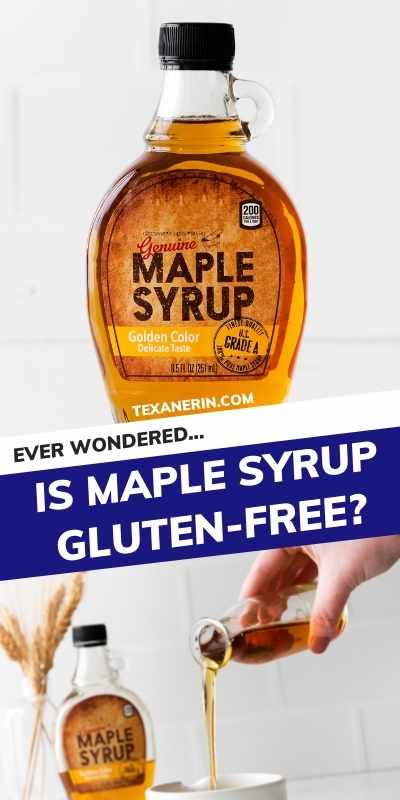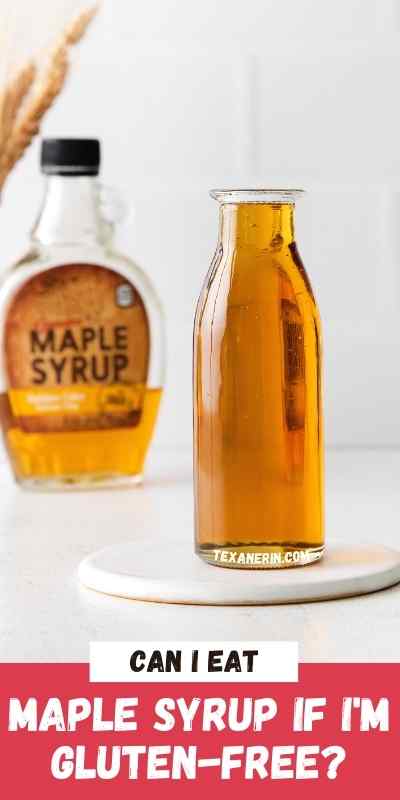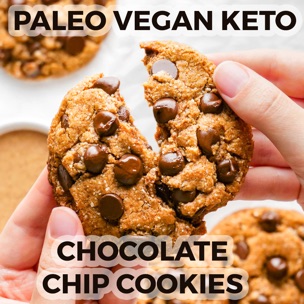Is maple syrup gluten-free? The short answer to this question is YES! And I have over 100 maple syrup recipes, most of which are gluten-free.
However, it’s important to understand that maple syrup is frequently served alongside such gluten products as pancakes, French toast, and other forms of gluten. In the process of pouring the syrup onto these other products, the container has the potential to become contaminated with gluten.
I can’t tell you how many times my family members have accidentally done this, not necessarily with maple syrup bottles, but spoons, knives, etc.…
Many restaurants have a special menu for gluten-free products. In such cases, they are far more likely to keep gluten-free products separate from other products.
Don’t be afraid to ask the waiter or waitress if the maple syrup is kept separate for the gluten-free and the non-gluten-free customers. They most likely aren’t, but it’s worth asking.
Good restaurants will make every effort to ensure that their gluten-free customers are served safe foods that don’t contain gluten.
The syrup itself is gluten-free but it’s important to understand that it’s not always easy to ensure that other customers who use the syrup haven’t cross-contaminated the syrup container.
One solution is to simply bring your own container of maple syrup that you already know hasn’t been cross-contaminated by gluten.

What Is Gluten?
New to eating gluten-free? Let’s take a few moments to educate ourselves on what gluten is and how it can affect the body! Gluten is found in many products on the market today and many people don’t even know that they’re eating it.
It’s found in breads, puddings, candy, and other foods and it’s not usually going to be listed as “gluten” on the label identifying the ingredients that are in the product.
Understanding what gluten is and how to identify it will go far in helping a person to follow a gluten-free diet safely and effectively. While eating gluten-free is often a diet fad, it’s also important for anyone who is gluten-sensitive or has celiac disease.
Gluten, a protein found in wheat, barley, and rye, is used to help bind ingredients together when making bread and other products. This protein helps to make the dough stretchy.
You can’t remove gluten from wheat, barley, or rye. There are, however, some flours that don’t contain gluten such as coconut flour, almond flour, and the like.
For someone who is gluten-sensitive or has celiac disease, gluten can cause a variety of uncomfortable reactions. These reactions include bloating, skin rashes, hives, gut pain, joint pain, and other digestive issues.
It’s important to understand that there is no cure for gluten sensitivity or for celiac disease. For those who have these conditions, it’s important to learn to avoid products that contain gluten.
It may seem like it should be easy to avoid products containing wheat, barley, or rye. However, it’s not as simple as reading the label.
In fact, it’s challenging at best. There are many products that contain “hidden” gluten. Gluten may be listed on the label under such terms as “caramel coloring or flavoring may be added”. In such cases, this hidden gluten may cause a serious reaction in a person who is gluten-sensitive or has celiac disease.
Gluten-Free Diets
It is challenging to follow a gluten-free diet. Many choose to follow a gluten-free diet as a fad diet, however, if you’re sensitive to gluten or have celiac disease, following a gluten-free diet is a must. Even products such as shampoos and conditioners with “wheat germ oil” may cause a reaction for some people.
Favorite foods may have to be given up in an effort to follow the gluten-free diet. Learning the hidden language in labels is tricky and it can be trial and error sometimes.
If you’re gluten-sensitive or have celiac disease, even the most minuscule amount of gluten can cause a reaction.
In most cases, if gluten is accidentally ingested, the person knows within minutes. Worse, it can take days to weeks for the gluten effect to wear off. In the meantime, the person may be suffering from joint pain, gut pain, skin issues, and more.

Gluten Awareness
Even the most steadfast gluten-free diet can sometimes fall prey to using a product with gluten. Labels don’t always obviously reflect that there may be gluten hidden in a product.
If you or someone you love has a gluten sensitivity or celiac, you need to be aware that just because you purchased a gluten-free product last week doesn’t mean that the product is still gluten-free this week. Recipes can change that fast and without warning.
Ingredients may be substituted without warning and labels aren’t always clear on whether or not gluten is in the product. Not all gluten-free products are labeled with as gluten-free.
To further complicate the question of “Is Maple Syrup Gluten-Free”? it’s important to understand that gluten sensitivity and celiac can strike a person at any time.
What was safe to eat yesterday may have a huge impact on health today. Allergies can crop up at any time in a person’s life just as diseases can suddenly appear.
If someone in your family has gluten sensitivity or celiac, it’s important to be aware of this and understand the signs and symptoms of the conditions.
You’re more likely to have the same body chemistry as a relative and you may find that if your family member has a gluten sensitivity or celiac, you might also have this condition at some point in time.
I hope I’ve answered your question. :) If you have any others, leave a comment below and I’ll be happy to help answer them.


